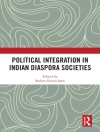A new perspective on lordship in England between the Norman Conquest and Magna Carta.Multiple lordship- that is, holding land or owing allegiance to more than one lord simultaneously- was long regarded under the western European "feudal" model as a potentially dangerous aberration, and a sign of decline in the structure of lordship. Through an analysis of the minor lords of Leicestershire, Derbyshire, and Staffordshire during the long twelfth century, this study demonstrates, conversely, that multiple lordship was at least as common as single lordship in this period and regarded as a normal practice, and explores how these minor lords used the flexibility of lordship structures to construct localised centres of authority in the landscape and become important actors in their own right. Lordship was, moreover, only one of several forces which minor lords had to navigate. Regional society in this period was profoundly shaped by overlapping ties of lordship, kinship, and locality, each of which could have a fundamental impact on relationships and behaviour. These issues are studied within and across lords’ honours, around religious houses and urban areas, and in a close case study of the abbey of Burton-upon-Trent. This book thus contextualises lordship within a wider landscape of power and influence.
Hannah Boston
Lordship and Locality in the Long Twelfth Century [PDF ebook]
Lordship and Locality in the Long Twelfth Century [PDF ebook]
Acquista questo ebook e ricevine 1 in più GRATIS!
Lingua Inglese ● Formato PDF ● Pagine 274 ● ISBN 9781805431718 ● Casa editrice Boydell & Brewer Ltd ● Pubblicato 2024 ● Scaricabile 3 volte ● Moneta EUR ● ID 9320387 ● Protezione dalla copia Adobe DRM
Richiede un lettore di ebook compatibile con DRM












